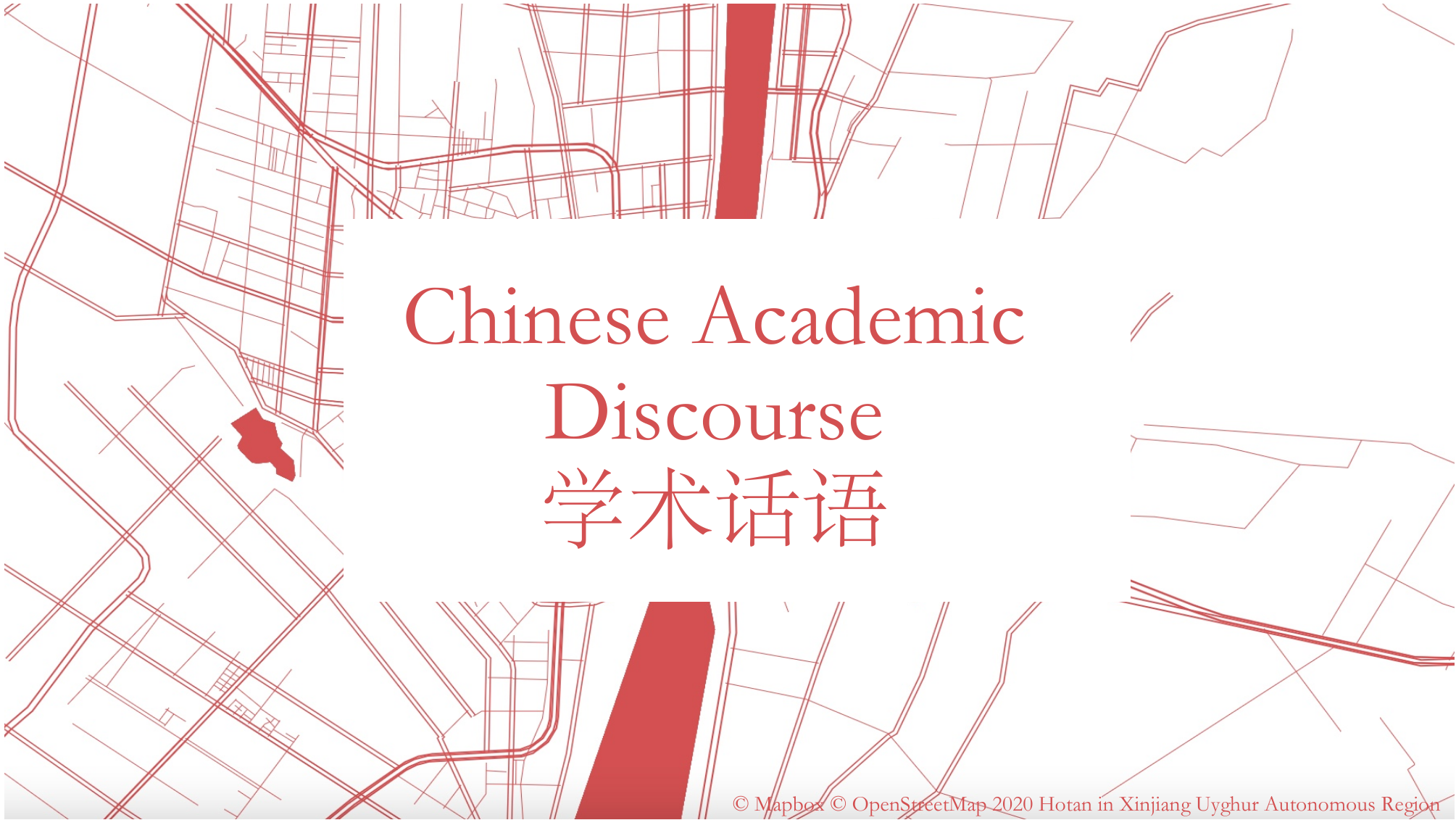
Introduction
These collections focus on academic discourse in the past decade as a context leading to the current mass internment of Uyghurs, Kazakhs, and other Turkic peoples in Xinjiang. These bibliographies aim to show the development of academic justifications generated by Chinese scholars. As part of the goal of this documentation project, we also host the original Chinese articles on this site to prevent “link rot” and make them available for the future.
Fazhan 发展This page collects and summarizes Chinese-language scholarship that informs the deployment of fazhan (发展) in state policy in Xinjiang. Fazhan means “development” and is inextricable from much of the state’s current national objectives, but in the context of Xinjiang, this refers specifically to discourse around the Belt and Road Initiative and poverty alleviation among Uyghurs, Kazakhs, and other ethnic minorities. |
Jieqin 结亲This page features an essay that contextualizes and explains academic research and graduate theses that describe, inform, and support jieqin (结亲)—short for Minzu Tuanjie Yijiaqin (民族团结一家亲)—which represents the idea that all of China’s 56 ethnicities should exist as one family. The essay charts the origins of policies that paired Han cadres with ethnic-minority families, describes how the state incentivized participation in related campaigns such as “Four Gifts and Four Togethers,” and details how this work was carried out on the ground. It also highlights prominent concepts in the discourse and features a bibliography that links to the relevant scholarship. |
Minzu 民族This pages collects and summarizes Chinese-language scholarship that informs the deployment of minzu (民族) in state policy in Xinjiang. Minzu translates roughly to “ethnicity” and has been instrumental not only in the governance of the region, but also for nation-building in China more broadly. This section places special emphasis on the second generation of minzu policies, which emphasize ethnic unity and the erasure of cultural difference. |
Anquan 安全The term anquan (Ch. safety, security, 安全, 公共安全), in Chinese academic discourse revolves around social stability, social management, population control, security, and surveillance technologies. This page features a collection of articles from Chinese institutions outlining the science behind technological advancements in the surveillance state. These papers explore how through partnerships between government ministries and universities, security and surveillance technologies are proliferated throughout the country. This work explicitly highlights how these technologies have been tailored to surveil the Turkic Muslims populations in the region through the creation of facial recognition databases and other biometric programs. |
Wending 稳定This page collects and summarizes Chinese-language scholarship that informs the deployment of wending (稳定) in state policy in Xinjiang. Wending means “stability” and covers policies ranging from counter-terrorism, anti-extremism, and mass surveillance. Academic consideration of the concept has broadened as the state’s justifications for the implementation of policies have increasingly emphasized terrorist threats posed by the region’s Muslim populations. |